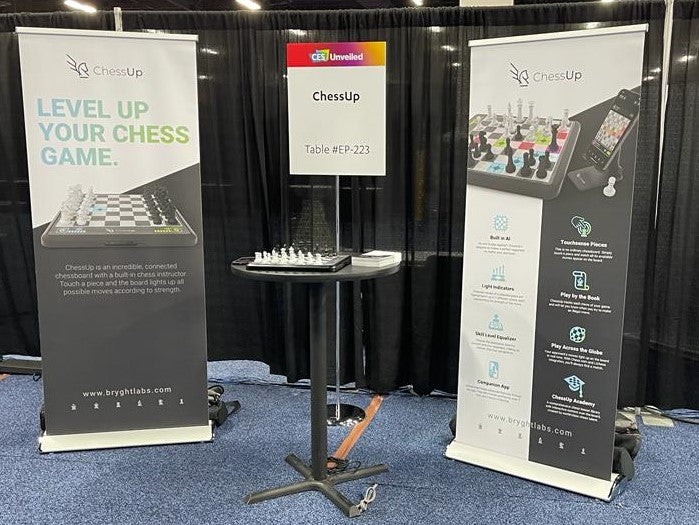In my previous blogs I have mentioned several tournament formats and have briefly explained what they are like. Let’s take a closer look at them in this post. If you are interested in playing in an over-the-board tournament (which I hope you will be at some point), you will need to know what to expect.
The Swiss System
This is the most popular format; most major open and weekend tournaments are Swiss tournaments. If the organizer expects a lot of players, they will have different rating categories within the tournament. Usually, there is an open section that is open to players of all strengths and rating categories such as U2200, U2200, etc. You will only face players in your section and if you are registered in the unrated section, you will only face other unrated participants.
Once the registration is closed, the players are ordered by rating then split into two. In round 1, the top player of the first half will play the top player of the bottom half, the second highest rated player will play the second highest rated in the bottom half and so on. If there is an odd number of players, the lowest rated player will normally receive a full point and will rejoin the tournament in the second round. This method continues throughout the tournament, and the Swiss System then ranks the players by points followed by ratings and does the same way of pairing. If after 4 rounds there are only 2 players with a perfect score, then it’s a forced pairing and they will have to play each other.
In this system, you will face players who have as many points as you, so if you’ve had a tough start with losing your first two games, you won’t face someone who is winning all their games. The Swiss System is great for accommodating a large event of hundreds of players and determining the winner after a set number of games. Most tournaments I play in are big opens which utilize the Swiss System. What I like about this system is that it allows me to play against much stronger opponents, and if I am having a good tournament, then I can face several Grandmasters in a row. What I dislike are the swings: playing someone very strong, losing the game then being paired against someone much weaker. If I never find my footing in the tournament, then this pattern can go on for many rounds until I can play someone around my rating.
Round Robins
In a round robin tournament everyone plays everyone. These are smaller tournaments and are usually designed for national championships or for norm seekers (we will talk about titles in another event). The invited players are usually around the same strength, so the swings we see in Swiss events are rare in round robins. If you follow top level chess, then you must be familiar with this format as almost all top level events are round robins. Once the field is set, the next step is the drawing of colors. This is a randomized process where the players are either assigned a number or if it’s a fancier event, they pick one at an opening ceremony. So if there are 10 players, each player picks a number from 1-10. Once this is done, the pairings for the tournament are set. Sometimes, the organizers will assign the numbers weeks before the tournaments and do the pairings, giving the players an opportunity to prepare very thoroughly for their opponents.
The US Women’s Championship I played in, and wrote about, was a round robin event. What I like about them is the amount of preparation they allow me to do beforehand. The tough part is that you don’t get an easier opponent if you are having a bad event. In the US Championship, after losing my first two games, I had to face a 4-time US Women’s Champion. Whereas in a Swiss System, I would play someone who had also lost their first two games.
Matches
These are very rare events that are quite exclusive. The major match that takes place every two years is the World Championship match. There are also exhibition matches such as Chess960 or blindfold matches. A match involves two players who play a predetermined number of games to determine who the better player is.
Knock-out Events
As of right now, there is only one knockout tournament, the World Cup. While it might be the most exhilarating event for the viewers, it is definitely the most heartbreaking one for the players. In other formats, the players get to play all the rounds regardless of their performance. Whereas in a knockout, the player is eliminated as soon as they lose.
In the last blog, I posted a position from game 8 of the 2021 World Chess Championship match. The answer is 22.Qa3+ and after Black plays Kf8 running away from the check, White plays 23.Qxa7, grabbing a free pawn and attacking the bishop on d7. With this sequence, Magnus Carlsen won an extra pawn and eventually the game. Enjoy the rest of the game below.

I will be playing in the North American Open in Las Vegas from December 26-30. It has been a few months since my last tournament, so I am hoping I will not be too rusty.
We will also be going to CES, a tech industry trade show, from January 3-8 in Las Vegas! If you plan on attending, stop by our booth and check out the board in person. We will be at Booth Number 61517 at Eureka Park at the Venetian.
Wishing everyone a happy and healthy holiday season!




Leave a comment
This site is protected by hCaptcha and the hCaptcha Privacy Policy and Terms of Service apply.